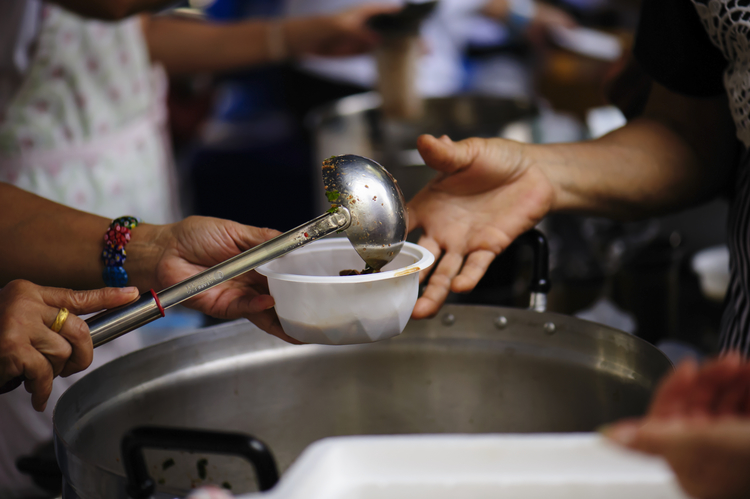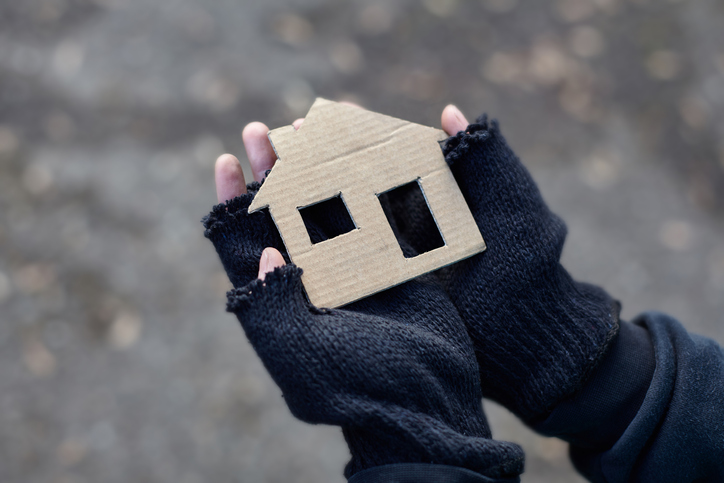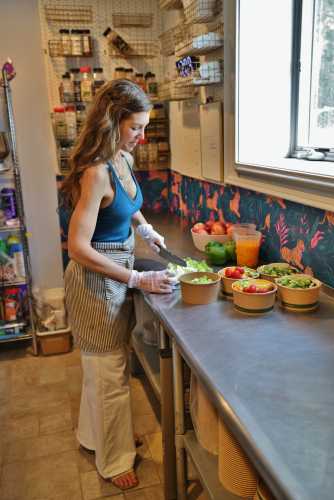Steve Edmonson, a 62-year-old longtime security guard who is active in local civic groups, found himself without a place to live after his mother died and her house in Oceanside was sold.
At first, the Nassau County Department of Social Services put him up in the Jones Beach Hotel in Seaford. But eventually his roommate got hungry, spent the money for the room on groceries, which is against the rules, and they were cut off. After being sent packing, Edmonson got by living in his car for a while, but fall set in and the temperatures began to drop. Now he’s staying in an emergency shelter in Roosevelt.
“This is a nightmare,” he tells the Press. “I never thought this would happen to me.”
Few people imagine such a fate for themselves. There but by the grace of God go any of us, Long Island advocates for the homeless often say. Edmonson is not alone.
IN THE SHADOWS
In 2018, Nassau and Suffolk counties had a combined 3,781 homeless people — about as many as there are residents in the Village of Lloyd Harbor on LI’s Gold Coast — a drop of nearly 3 percent from the year prior.
While the numbers are heading in a positive direction, the local trend comes as New York State’s homeless population is on the rise and ranks second nationwide after California, with more than 91,000 in shelters or on the streets.
But as the Press has previously reported, the statistics, while valuable, are often lower than in reality. That’s because when the U.S. Department of Housing and Urban Development (HUD) coordinates the annual homeless census — known as the point-in-time count — volunteers, despite their best efforts, inevitably miss those who are hospitalized, jailed, institutionalized, those who refuse to identify themselves as homeless, or those who simply can’t be found.
Of course, not all those who wind up homeless have the same circumstances. As a former security guard, Edmonson is perturbed to be in a shelter with parolees and sex offenders. But that’s still a better temporary situation than those who don’t qualify for emergency shelter because they lack an eviction notice since their last home was in an illegal apartment, or they work nights and can’t follow the curfew without losing their job, or suffer from the disease of addiction that makes it difficult to be sober before getting a bed. Tent cities in woodlands along local parkways are sometimes where those who fall through the cracks wind up.
A lack of affordable housing is both the leading cause of homelessness and an issue discussed ad nauseam by local political leaders. Suffolk officials were touting a new affordable housing project for homeless veterans as this story went to press. The severity of the problem can be illustrated in LI’s network of about 100 homeless shelters.
“We have folks living in shelters with Section 8 vouchers,” says Greta Guarton, LMSW, executive director Long Island Coalition for the Homeless, an Amityville-based nonprofit. “They are really, really struggling to find landlords who are willing to accept their vouchers. That’s a major challenge.”

PARALLEL HUNGER TRENDS
The mixed bag of progress and persistent challenges facing LI’s homeless mirrors issues facing the larger population of those who classify as food insecure, which includes those without roofs over their heads.
The number of Long Islanders who don’t know where their next meal is coming from is also trending downward, experts say. There was a 4.8 percent decrease in people going hungry in Nassau and Suffolk last year, according to estimates in the latest Map the Meal Gap report by Feeding America, the nation’s largest domestic hunger relief organization. But Long Island Cares, Inc.—The Harry Chapin Food Bank, one of LI’s two major nonprofit food banks, notes that the stats, which include 155,150 local residents receiving Supplemental Nutrition Assistance Program (SNAP), commonly known as food stamps, or other government assistance, is only a fraction of those visiting the more than 500 soup kitchens and food pantries on LI.
“Despite the encouraging decrease, Long Island Cares reports a 10 percent increase in the number of visits to its three satellite locations in Freeport, Lindenhurst, and Huntington Station, an increase also reported by many of our larger member agencies,” reports Paule Pachter, chief executive officer of Long Island Cares. “It’s troubling to see an increase in the number of people utilizing our network of pantries at a time when overall numbers of food insecurity in the region are decreasing. It illustrates that families in need are experiencing greater need and visiting pantries more often just to get by.”
Statewide, more than 2.4 million New Yorkers classify as food insecure, advocates say.
While those numbers are troubling, there is some good news. After President Donald Trump’s trade war with China left many American farmers unable to sell their crops overseas, the government bought the food as a part of a federal bailout and donated the fresh fruit, vegetables, and meat to food banks nationwide that are typically stocked only with nonperishable items such as canned goods. LI’s food banks recently received millions of pounds as a part of the program.
That’s not to say Long Islanders who are able to donate to food banks should hold off. Island Harvest puts the total number of food insecure Long Islanders at more than 300,000. Local hunger relief groups will continue to need all the help they can get.
MOVING FORWARD
The dovetailing issues of homelessness and hunger are not going to solve themselves. And thousands more Long Islanders are at risk, studies show.
Thirty-three percent of Long Island households are above the poverty level but don’t make enough to keep up with the high cost of living in Nassau and Suffolk counties, according to a 2018 study by the United Way of New York State.
The report — a follow up to the inaugural analysis in 2016 — dubbed this segment of the population ALICE, short for Asset Limited, Income Constrained, Employed. That is, those people who can’t make ends meet without making tough choices regarding basic necessities: food, shelter, child care, transportation, and healthcare. For example, some are forced to forgo health care, child care, good food, and even car insurance in order to pay their rent — sacrifices that put their health, safety, and future at risk.
On Long Island, 302,988 households were struggling to afford these basic needs in the decade since the Great Recession ended in 2010 — 132,236 in Nassau and 170,752 in Suffolk. In Nassau, the household survival budget is $89,208 for a home with two adults, one infant and one preschooler. In Suffolk, it’s $97,296. Yet 51 percent of all full-time jobs statewide pay less than $40,000 annually. Even working multiple jobs often does not provide sufficient income to meet the ALICE threshold.
“Long Islanders are working hard for the wages they earn, but unfortunately those wages might not be enough to cover life’s basic costs,” said United Way of Long Island President and CEO Theresa Regnante. “These families don’t qualify for federal assistance, and can find themselves needing help from organizations like United Way to recover from an unexpected cost or emergency situation. This ALICE Report highlights the significant difference between income and cost of living, pointing out the need to work toward bringing those numbers closer together.”
The question is, what are Long Islanders going to do about it?
2018 LI HOMELESSNESS FIGURES
Total: 3,781
Sheltered: 2,597
Mentally ill: 259
Domestic violence survivors: 128
Veterans: 128
Unaccompanied youth: 81
Substance abusers: 85
In transitional housing: 75
Unsheltered: 46
Diagnosed with HIV/AIDS: 10
Source: Long Island Coalition for the Homeless
LI FOOD INSECURITY FIGURES
Long Islanders impacted by food insecurity in 2017: 259,000
Number of those who are children: 79,000
Number of Long Islanders who make too much to qualify for food stamps but still need to rely on food banks and soup kitchens: 103,434
Source: Long Island Cares



































